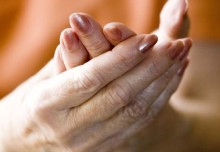With Fall in the air, and leaves, ice and snow beginning to layer the ground, the risk of taking a fall begins its season as well. This is particularly true for people over the age of 65 or those who have physical disabilities or reduced vision. One in four people who live at home and are over 65 will fall within the next year and 65% of all falls occur at home.
For women in menopause, men in andropause, or men and women who have osteoporosis, this can lead to a broken hip, hospitalization and even death. As a matter of fact, in the senior population, falls are the leading cause of injury and deaths and the most common cause of nonfatal injuries and hospital admissions for trauma. It can be due to slippery conditions around the home like leaves and black ice, poor balance or poor vision or medications among other things.
Here are some simple things to do to lower both the risk and the consequences of taking a fall:
Personally:
- Exercise and condition for more strength, flexibility and balance, and weight loss if you are overweight to ease arthritis and lower the risk of falls
- Have a bone density test done after age 50 and a blood test for vitamin D to see if you are at risk for osteoporosis which would increase your risk for a broken bone
Around the home:
- Have the area well plowed and cleared
- Use sand or salt on outdoor walks and steps in colder climates
- Carpet any wood or tile floors to cushion a fall and reduce hip fracture risk
Bathrooms:
- Have a sturdy plastic seat placed in your shower or tub so can sit down if needed
- Buy a had-held shower nozzle so you can shower sitting down
- Place grab bars inside and just outside your shower or bathtub
- Use a raised toilet seat or one with armrests to steady you
Stairs:
- Install light switches at the top and bottom of stairs
- Install handrails on both sides of stairways
- Use nonskid treads on bare-wood steps
- Turn on the lights before going up or down stairs
Vision:
- Check the prescription for your eyeglasses regularly to maintain your best vision
- Have plenty of light. Keep a lamp near your bed with a switch that is easy to reach and turn on. Be sure to use it when you get up at night
- Make clear paths to light switches that aren’t near room entrances. Glow-in-the-dark or illuminated switches are very helpful
- Place night-lights in your bedroom, bathrooms and hallways
- Store flashlights in easy-to-find places in case of power outages
Find lots more information on falls and other medical emergencies in my new book co-written with Shelly Glazier called Save Your Life: What to Do in A Medical Emergency. It’s a simple to read, easy guide to help you know what to do in a medical emergency, when to call 9-1-1, and what to do after you call.





